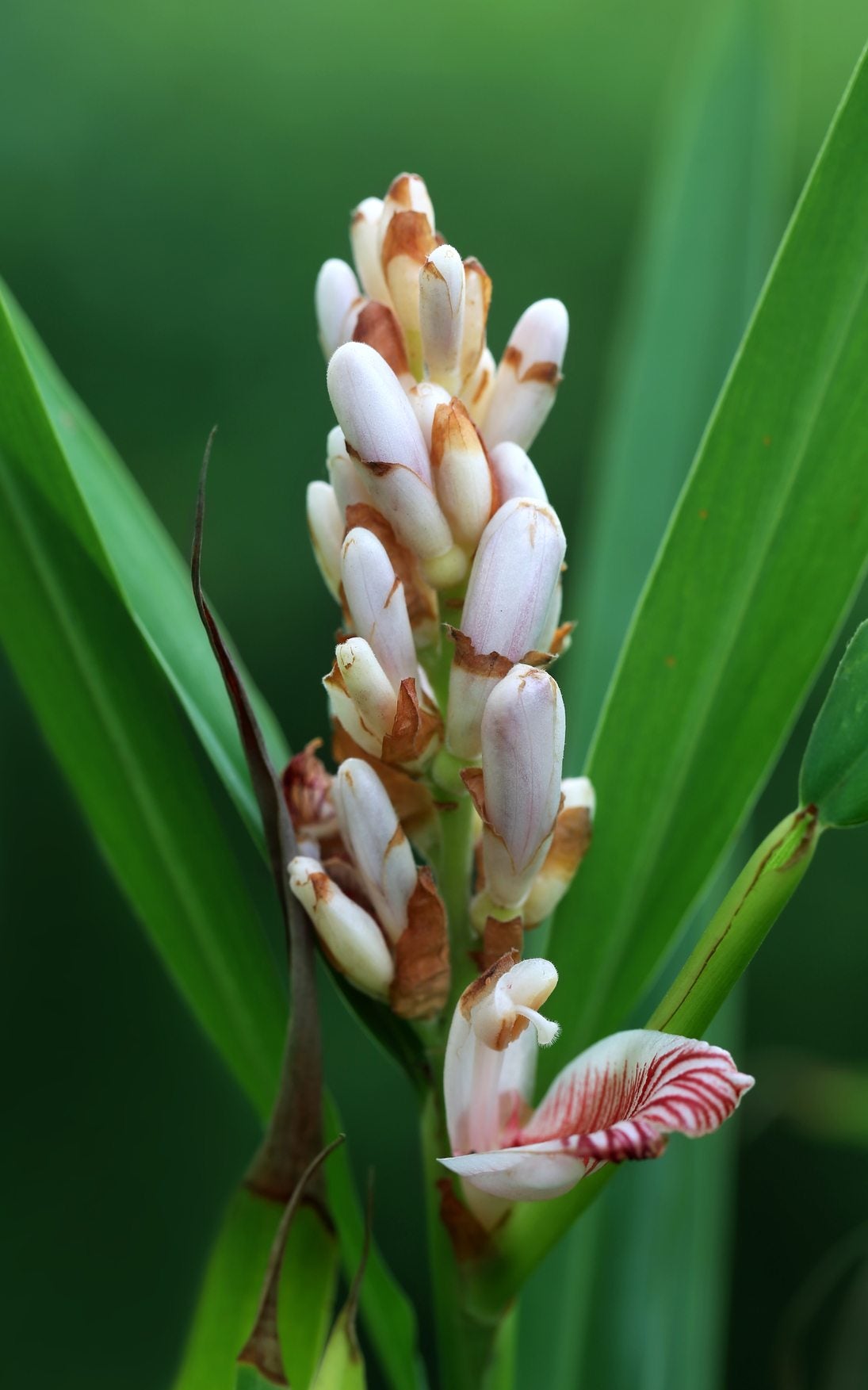Cardamom Information: What Are Uses For Cardamom Spice


Cardamom (Elettaria cardamomum) hails from tropical India, Nepal, and South Asia. What is cardamom? It is a sweet aromatic herb not only employed in cooking but also part of traditional medicine and tea. Cardamom is the third most expensive spice in the world and has a rich history of use in many countries as part of spice blends, such as masala, and as a crucial ingredient in Scandinavian pastries.
What is Cardamom?
An interesting and crucial piece of cardamom information is that the plant is in the Zingiberaceae family, or ginger. This can be seen in the aroma and flavor. The many uses for cardamom have made it one of the most sought after of the spices. This forest dwelling plant is a perennial, which grows from large rhizomes. Cardamom spice can successfully be grown in United States Department of Agriculture zones 10 and 11. The cardamom plant is a 5 to 10 foot (1.5-3 m.) tall tropical plant that thrives in partial shade. The leaves are lance shaped and may grow up to 2 feet (61 cm.) in length. Stems are rigid and erect, forming an inverted skirt around the plant. The flowers are tiny, but pretty, in either white with yellow or red but another form of the plant may also produce black, white, or red pods. The pods are crushed open to reveal tiny black seeds, the source of cardamom spice. Once the seeds are crushed, they release powerful aromatic oils with flavor reminiscent of ginger, clove, vanilla, and citron.
Additional Cardamom Information
Among the many uses for cardamom in the United States and several other countries is in perfume. It is also used in curries and other spice blends, crushed in Nordic breads and sweets, incorporated into tea and coffee, and even used in Ayurvedic medicine. As a medicinal, cardamom is traditionally used to treat insect and snake bites and as a cure for sore throats, oral infections, tuberculosis, and other lung issues, as well as stomach and kidney ailments. It also has potential to help with mental depression and some say it is a powerful aphrodisiac. If you want to try growing cardamom to harness these possible benefits as well as its high manganese content, you will need to reside in a tropical climate with no freezing conditions or grow in containers that can be moved indoors.
Tips on Growing Cardamom
As an understory plant, cardamom prefers humus rich soil, slightly on the acidic side. Sow seeds approximately 1/8 under fine soil and keep the medium evenly moist. Transplant to pots when you see two pairs of true leaves. Grow on outdoors in summer or year-round in warm regions. Cardamom needs to stay moist and does not tolerate drought. In hot, arid regions, provide extra humidity through the leaves. Cardamom may flower three years after planting and the rhizomes can live for decades with good care. Move plants indoors at the end of summer in areas with freezing weather. Place indoor plants where they receive six to eight hours of bright but filtered light. Transplant older plants every few years to prevent root binding. Cardamom is fairly easy to grow indoors but remember that mature plants can achieve up to 10 feet (3 m.), so choose a location with plenty of space for the plant to stretch out into.
Gardening tips, videos, info and more delivered right to your inbox!
Sign up for the Gardening Know How newsletter today and receive a free copy of our e-book "How to Grow Delicious Tomatoes".

Bonnie Grant is a professional landscaper with a Certification in Urban Gardening. She has been gardening and writing for 15 years. A former professional chef, she has a passion for edible landscaping.
-
 Looking For Plants To Give You The Soft And Fuzzies? Try These 5 Fuzzy Leaf Plant Options
Looking For Plants To Give You The Soft And Fuzzies? Try These 5 Fuzzy Leaf Plant OptionsLovers of texture, drama, silver foliage and tactile plants will adore these special sensory garden additions. These fuzzy leaf plant options will leave you all aglow
By Susan Albert
-
 Get Ready For A Summer Of Hummers! Grow These Full Sun Hummingbird Plants and Flowers
Get Ready For A Summer Of Hummers! Grow These Full Sun Hummingbird Plants and FlowersIf you’re lucky enough to enjoy a sunny backyard, make sure you are maxing out on your pollinator opportunities and grow these full sun hummingbird plants and flowers
By Tonya Barnett